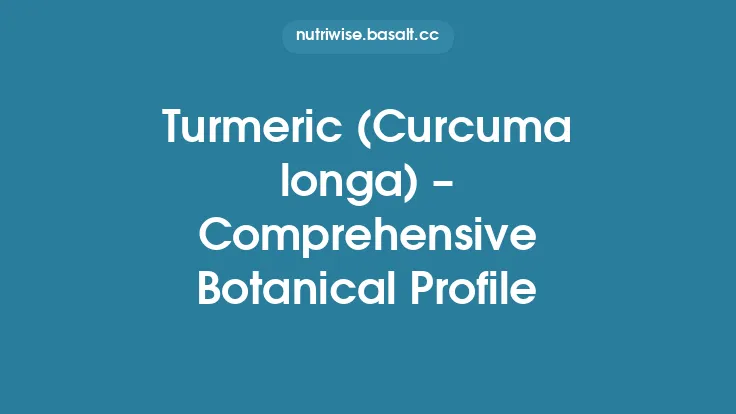Green tea extract, derived from the leaves of *Camellia sinensis*, has become one of the most widely studied and utilized botanical ingredients in the dietary supplement market. Its popularity stems from a rich phytochemical profile, a long history of traditional consumption, and a growing body of scientific evidence supporting a range of health‑related effects. This article provides an in‑depth, evergreen overview of green tea extract, covering botanical background, phytochemistry, extraction technologies, pharmacokinetics, clinical applications, safety considerations, regulatory status, and best practices for quality assurance.
Botanical Overview
*Camellia sinensis* is an evergreen shrub native to East Asia, belonging to the family Theaceae. The plant thrives in subtropical climates, preferring well‑drained, acidic soils and elevations between 1,000 and 2,500 m. Two primary cultivars give rise to the major types of tea:
| Cultivar | Typical Use | Processing |
|---|---|---|
| *C. sinensis var. sinensis* | Green, white, and oolong teas | Minimal oxidation; steaming or pan‑firing |
| *C. sinensis var. assamica* | Black tea | Full oxidation (fermentation) |
Green tea extract is most commonly produced from the young, tender leaves of the *sinensis* variety, harvested before full leaf expansion to maximize catechin content.
Phytochemical Profile
The therapeutic potential of green tea extract is largely attributed to its polyphenolic constituents, especially catechins. The major compounds include:
| Compound | Approximate % of Dry Weight | Key Biological Activities |
|---|---|---|
| Epigallocatechin‑3‑gallate (EGCG) | 30–50 % of total catechins | Antioxidant, anti‑inflammatory, thermogenic |
| Epigallocatechin (EGC) | 10–20 % | Antioxidant, neuroprotective |
| Epicatechin‑3‑gallate (ECG) | 5–15 % | Cardioprotective, anti‑platelet |
| Epicatechin (EC) | 5–10 % | Vascular health |
| Theaflavins & thearubigins (minor) | <5 % | Antimicrobial, lipid‑modulating |
| Caffeine | 2–5 % | Central nervous system stimulant |
| L‑theanine | 0.5–2 % | Modulates neurotransmission, promotes relaxation |
In addition to catechins, green tea extract contains flavonols (e.g., quercetin, kaempferol), vitamins (C, E, B‑complex), minerals (manganese, zinc), and trace amounts of chlorophyll and carotenoids.
Extraction Methods and Standardization
The quality and potency of green tea extract depend heavily on the extraction technique and subsequent standardization. Common methods include:
- Aqueous Extraction – Mimics traditional tea brewing; yields a broad spectrum of water‑soluble catechins but lower overall concentration.
- Ethanol/Water Co‑solvent Extraction – Balances polarity to extract both catechins and minor lipophilic constituents; widely used for commercial extracts.
- Supercritical CO₂ Extraction – Offers high selectivity, minimal solvent residues, and preserves thermolabile compounds; increasingly adopted for premium products.
- Ultrasound‑Assisted Extraction (UAE) – Enhances mass transfer, reduces extraction time, and can improve catechin yield.
Standardization is typically expressed as a percentage of total catechins (often 50 %–98 %) or as a specific EGCG content (e.g., ≥ 30 % EGCG). Reliable manufacturers provide certificate of analysis (CoA) confirming these specifications, along with heavy‑metal testing and microbial limits.
Pharmacokinetics and Metabolism
| Parameter | Typical Value (Human) |
|---|---|
| Absorption | ~30 % of ingested EGCG appears in plasma; absorption is enhanced with fasting and reduced by high‑protein meals |
| Peak Plasma Concentration (Cmax) | 0.5–1.5 µg/mL (≈1–3 µM) for a 300 mg EGCG dose |
| Half‑Life (t½) | 3–5 h for catechins; caffeine ~5 h |
| Metabolism | Phase II conjugation (glucuronidation, sulfation, methylation) primarily in the liver and intestinal epithelium |
| Excretion | Renal elimination of conjugated metabolites; minor biliary excretion |
The presence of food, especially proteins and fats, can significantly lower catechin bioavailability by forming insoluble complexes. Formulation strategies such as phospholipid complexation (e.g., “phytosome”) or nano‑emulsion can improve systemic exposure.
Clinical Evidence and Therapeutic Applications
1. Antioxidant and Anti‑Inflammatory Effects
Randomized controlled trials (RCTs) consistently demonstrate reductions in oxidative stress biomarkers (e.g., malondialdehyde, 8‑iso‑PGF₂α) after 8–12 weeks of daily green tea extract supplementation (300–500 mg EGCG). Anti‑inflammatory outcomes include decreased serum C‑reactive protein (CRP) and interleukin‑6 (IL‑6) levels.
2. Metabolic Health
Meta‑analyses of ≥ 30 RCTs reveal modest but statistically significant improvements in:
- Body weight: −0.5 to −1.5 kg over 12 weeks (dose‑dependent)
- Visceral fat: ↓ 2–5 % measured by MRI/CT
- Insulin sensitivity: ↓ fasting insulin by 10–15 % (HOMA‑IR)
Mechanisms involve catechin‑mediated activation of AMP‑activated protein kinase (AMPK) and increased thermogenesis via brown adipose tissue recruitment.
3. Cardiovascular Protection
Long‑term cohort studies associate habitual green tea consumption (≥ 3 cups/day) with a 15–20 % lower risk of coronary artery disease. Intervention trials report:
- Blood pressure: ↓ systolic 2–4 mm Hg, diastolic 1–2 mm Hg
- Lipid profile: ↓ LDL‑C by 5–10 %, ↑ HDL‑C modestly
- Endothelial function: Improved flow‑mediated dilation (FMD) by 1–2 %
These benefits are attributed to EGCG’s inhibition of LDL oxidation, nitric oxide (NO) bioavailability enhancement, and anti‑platelet activity.
4. Neuroprotection and Cognitive Function
Preclinical models show EGCG crossing the blood‑brain barrier, attenuating amyloid‑β aggregation, and modulating signaling pathways (e.g., PI3K/Akt, MAPK). Human trials in older adults (≥ 60 y) using 300 mg EGCG daily for 6 months report:
- Improved working memory (digit span) and attention (Stroop test)
- Reduced subjective mental fatigue
While promising, larger trials are needed to confirm disease‑modifying effects in neurodegenerative conditions.
5. Cancer Prevention (Evidence Summary)
Epidemiological data suggest an inverse relationship between green tea intake and certain cancers (e.g., breast, prostate, colorectal). Controlled trials using green tea extract as an adjunct to standard therapy have shown:
- Decreased recurrence rates in non‑muscle‑invasive bladder cancer (EGCG 600 mg/day)
- Improved pathological response in early‑stage prostate cancer (EGCG 400 mg/day)
Nevertheless, the evidence remains mixed, and green tea extract is not approved as a monotherapy for cancer.
Safety, Contraindications, and Drug Interactions
| Issue | Details |
|---|---|
| General Tolerability | Most studies report mild gastrointestinal upset (nausea, abdominal discomfort) at doses ≤ 800 mg EGCG/day. |
| Hepatotoxicity | Rare cases of elevated transaminases have been linked to high‑dose (> 1,200 mg EGCG/day) or poorly standardized extracts. Monitoring liver enzymes is advisable for long‑term high‑dose use. |
| Caffeine‑Related Effects | Contains 2–5 % caffeine; may cause insomnia, jitteriness, or tachycardia in sensitive individuals. Decaffeinated extracts are available. |
| Bleeding Risk | EGCG can inhibit platelet aggregation; caution in patients on anticoagulants (warfarin, clopidogrel) or undergoing surgery. |
| Iron Absorption | Polyphenols chelate non‑heme iron, potentially reducing absorption. Separate supplementation from iron‑rich meals. |
| Pregnancy & Lactation | Limited data; most guidelines recommend ≤ 300 mg EGCG/day, preferably from dietary tea rather than concentrated extracts. |
| Drug Interactions | - Beta‑blockers: EGCG may potentiate hypotensive effects.<br>- Statins: Potential additive hepatotoxicity at high doses.<br>- Chemotherapeutics: EGCG may interfere with drug metabolism (CYP3A4, CYP2C9). Consultation with a healthcare professional is essential. |
Dosage Recommendations and Formulation Considerations
| Goal | Typical Daily Dose (Standardized Extract) | Form |
|---|---|---|
| General antioxidant support | 250–500 mg total catechins (≈ 30–50 % EGCG) | Capsules, tablets |
| Weight‑management adjunct | 300–600 mg EGCG (≈ 50 % of total catechins) | Capsules, softgels |
| Cardiovascular health | 300–400 mg EGCG | Capsules, powder |
| Cognitive enhancement (older adults) | 200–300 mg EGCG | Capsules, liposomal formulation |
| Athletic performance (thermogenesis) | 400–800 mg EGCG (split doses) | Capsules, fast‑release powder |
For optimal absorption, many manufacturers recommend taking the extract with a small amount of water on an empty stomach, or using formulations that incorporate phospholipids (e.g., EGCG‑phytosome) or cyclodextrin complexes.
Regulatory Landscape
- United States (FDA): Green tea extract is classified as a dietary supplement ingredient. Manufacturers must ensure safety, proper labeling, and compliance with Good Manufacturing Practices (GMP). No health claims beyond “supports antioxidant activity” are permitted without FDA pre‑approval.
- European Union (EFSA): EGCG is recognized as a novel food ingredient when used above traditional tea consumption levels. Maximum daily intake for EGCG is set at 300 mg for the general adult population to mitigate liver safety concerns.
- Canada (Health Canada): Green tea extract is listed in the Natural Health Products Database. Products must provide evidence of safety and efficacy for any claimed therapeutic benefit.
- Australia/New Zealand (TGA): Listed as a “low‑risk” complementary medicine; labeling must include cautions regarding caffeine and potential liver effects.
Manufacturers seeking to market high‑dose EGCG products often pursue “food‑grade” or “pharmaceutical‑grade” certifications to demonstrate purity and consistency.
Quality Assurance and Third‑Party Testing
To ensure product integrity, reputable green tea extracts undergo the following checks:
- Identity Verification – DNA barcoding or HPLC fingerprinting confirms *Camellia sinensis* origin.
- Purity Assessment – Heavy‑metal analysis (lead, arsenic, cadmium, mercury) below USP limits; pesticide residue screening.
- Microbial Limits – Total aerobic count, yeast/mold, and absence of pathogens (E. coli, Salmonella).
- Catechin Profile – HPLC‑UV or LC‑MS quantifies EGCG, EGC, ECG, EC, and caffeine.
- Stability Testing – Accelerated and real‑time studies verify catechin retention over shelf life (typically 24–36 months).
Third‑party certifications (e.g., NSF Certified for Sport, USP Verified, ConsumerLab) provide additional consumer confidence, especially for athletes subject to anti‑doping regulations.
Future Directions and Emerging Research
- Nanotechnology: EGCG‑loaded nanoparticles (lipid, polymeric, or inorganic) are being explored to enhance bioavailability and target delivery to specific tissues (e.g., brain, tumor microenvironment).
- Synergistic Formulations: Combining green tea extract with other botanicals (e.g., curcumin, resveratrol) or micronutrients (e.g., vitamin C) may produce additive antioxidant or anti‑inflammatory effects.
- Personalized Nutrition: Genotype‑guided dosing (e.g., CYP1A2 polymorphisms affecting caffeine metabolism) could optimize efficacy while minimizing adverse reactions.
- Gut Microbiome Interactions: Recent studies suggest that gut bacteria metabolize catechins into bioactive phenolic acids, influencing systemic health outcomes. Prebiotic fibers may modulate this conversion.
Continued high‑quality, double‑blind RCTs are essential to clarify dose‑response relationships, long‑term safety, and disease‑specific benefits.
Practical Take‑aways for Consumers and Professionals
- Choose standardized extracts with clear EGCG or total catechin percentages; avoid “proprietary blend” labels that obscure content.
- Mind the dose: For most health goals, 300–500 mg EGCG per day is sufficient; higher doses increase the risk of liver enzyme elevation.
- Consider timing: Take on an empty stomach or with a low‑protein snack to maximize absorption; separate from iron supplements.
- Watch for interactions: Counsel patients on potential additive effects with anticoagulants, stimulants, or hepatotoxic drugs.
- Prioritize quality: Look for third‑party testing, GMP certification, and transparent sourcing (e.g., organic, shade‑grown leaves).
By adhering to these guidelines, users can harness the well‑documented benefits of green tea extract while minimizing risks, making it a valuable component of a balanced, evidence‑based supplement regimen.





